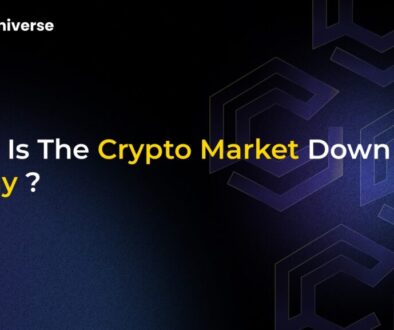Enhancing Ethereum’s Scalability Through Gas Limit Increase

Ethereum’s Quest for Scalability: A Deep Dive into the Proposed Gas Limit Increase
Ethereum, the powerhouse of decentralized applications (dApps) and DeFi, constantly faces the challenge of scalability. High demand often leads to network congestion and increased transaction fees (gas fees), impacting user experience. While Layer-2 solutions have emerged as crucial scaling aids, efforts are underway to significantly enhance the capacity of Ethereum’s base layer (Layer 1). One prominent proposal, EIP-9698, aims to tackle this head-on by dramatically increasing the network’s gas limit.
What is the Ethereum Gas Limit?
Before diving into the proposal, let’s quickly understand the gas limit. Think of the Ethereum network like a highway. Gas is the toll paid for using the highway (performing transactions or executing smart contracts), and the gas limit is like the highway’s total capacity – the maximum amount of computational effort (gas) that can be included in a single block. A higher gas limit means more transactions and computations can fit into each block, potentially increasing the network’s overall throughput (Transactions Per Second or TPS).
Introducing EIP-9698: A Potential 100x Boost
Proposed by Ethereum Foundation researcher Dankrad Feist, EIP-9698 represents a bold step towards enhancing Ethereum’s core scalability. This proposal isn’t just a minor tweak; it suggests a massive, albeit gradual, increase in the mainnet gas limit.
Here are the key aspects of EIP-9698:
- Massive Increase: The proposal outlines a potential 100-fold increase in the gas limit over a defined period.
- Gradual Implementation: Starting potentially as early as June, the increase wouldn’t happen overnight. Instead, it would follow a predictable, deterministic growth schedule spread over approximately four years.
- Target Limit: The goal is to raise the gas limit from its current levels (recently increased to 36 million) eventually reaching a staggering 3.6 billion.
- Projected TPS: If successfully implemented, this expansion could allow the Ethereum mainnet to process significantly more transactions, potentially reaching up to 2,000 TPS.
- Community Decision: Importantly, this isn’t a unilateral decision. Ethereum clients (the software nodes run) would need to vote to adopt and implement this change.
The core idea behind this gradual, predictable increase is to align the network’s capacity growth with expected advancements in hardware capabilities and protocol optimizations, ensuring node operators can keep up.
Why Increase the Gas Limit? Impact and Competitiveness
Increasing the base layer’s capacity offers several potential benefits:
- Enhanced Throughput: Directly boosting the TPS addresses scalability concerns at the foundational level, making the mainnet itself more capable.
- Improved User Experience: Higher capacity can lead to reduced network congestion and potentially lower average gas fees during peak times.
- Competitive Edge: A higher TPS rate helps Ethereum better compete with newer blockchains like Solana, known for their high transaction speeds.
- Balancing Layer 1 and Layer 2: While Layer 2 solutions are vital, some argue that an over-reliance on them has led to fragmentation within the ecosystem. Strengthening Layer 1 provides a more robust foundation for all activity.
The Role of Layer-2 Solutions
Does a Layer 1 gas limit increase make Layer 2 solutions obsolete? Absolutely not. Layer 2 scaling solutions, such as Optimistic Rollups, ZK-Rollups, sidechains, and payment channels, remain crucial components of Ethereum’s scalability strategy.
These solutions work by processing transactions off the main Ethereum chain, bundling them, and then posting summarized data back to Layer 1. This significantly reduces the load on the mainnet, offering:
- Faster transaction speeds
- Lower gas costs
Layer 2s and Layer 1 improvements like the proposed gas limit increase are complementary. Layer 2s handle high-volume, lower-value transactions efficiently, while a more robust Layer 1 provides a secure and decentralized settlement layer for these solutions and handles high-value transactions directly. The debate often revolves around finding the right balance and considering the trade-offs between security, decentralization, and complexity for each approach.
Broader Scaling Efforts: Looking Ahead
EIP-9698 isn’t the only scaling initiative being explored. Discussions among Ethereum developers also include considerations for a potential fourfold gas limit increase as part of the future Fusaka hard fork. These combined efforts underscore Ethereum’s ongoing commitment to evolving and improving its performance to meet the growing demands of the blockchain ecosystem.
Conclusion: Paving the Way for a More Scalable Ethereum
The proposal to increase Ethereum’s gas limit by up to 100x is a significant development in the network’s journey towards greater scalability. While requiring careful consideration and community consensus, EIP-9698, alongside the continued development of Layer 2 solutions, signals a strong push to enhance Ethereum’s capacity, improve user experience, and solidify its position as a leading blockchain platform. If implemented, this change could reshape Ethereum’s performance landscape, enabling it to handle a much larger volume of transactions directly on its mainnet.


